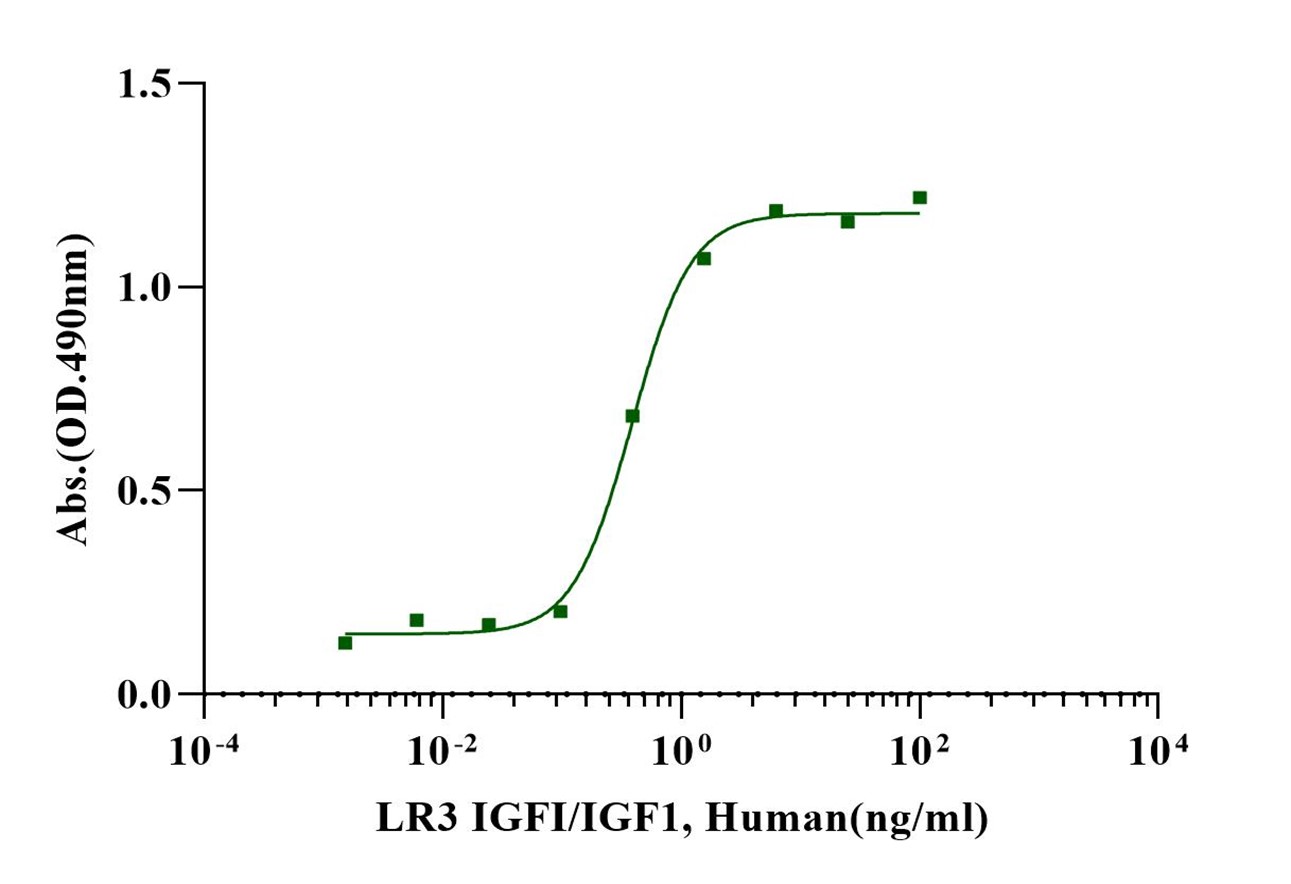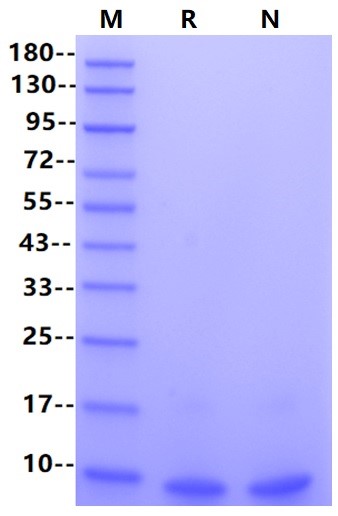














IGF-I is a well-characterized basic peptide secreted by the liver that circulates in the blood. It has growth-regulating, insulin-like, mitogenic activities. IGF-I is a growth factor that has a major, but not absolute, dependence on somatotropin. It is believed to be mainly active in adults in contrast to IGF-II, which is also a major fetal growth factor. Human Long R3 Insulin-like Growth Factor-I (rhLR3-IGF-I) contains an 83 amino acid analog of human IGF-I. Compared to the complete human IGF-I sequence, an addition of the rhLR3-IGF-1 includes the substitution of an Arg for the Glu at position 3 (hence R3) and a13 amino acid extension peptide at the N-terminus. An enhanced potency is due to the markedly decreased binding of human Long R3-IGF-I to IGF binding proteins which normally inhibit the biological actions of IGFs.


· 3 months, -20 to -80℃ under sterile conditions after reconstitution.
· 1 week, 2 to 8℃ under sterile conditions after reconstitution.
· Please avoid repeated freeze-thaw cycles.
1、Richman C. et al. (1999) Recombinant human insulin-like growth factor-binding protein-5 stimulates bone formation parameters in vitro and in vivo. Endocrinology. 140(10): 4699-4705.
2、Carlson S W. et al. (2018) Central Infusion of Insulin-Like Growth Factor-1 Increases Hippocampal Neurogenesis and Improves Neurobehavioral Function after Traumatic Brain Injury. J Neurotrauma. 35(13):1467-1480.

参考图片
Measured in a serum-free cell proliferation assay using MCF‑7 human breast cancer cells. The ED50 for this effect is less than 0.5 ng/ml.
2μg (R: reducing condition, N: non-reducing condition).







 用小程序,查商品更便捷
用小程序,查商品更便捷







 危险品化学品经营许可证(不带存储) 许可证编号:沪(杨)应急管危经许[2022]202944(QY)
危险品化学品经营许可证(不带存储) 许可证编号:沪(杨)应急管危经许[2022]202944(QY)  营业执照(三证合一)
营业执照(三证合一)